What I Learned at A Stupid-Big Wine Event
Five lessons from one of those events where wines number in the hundreds, drinkers number in the thousands, and a nasty hangover is just a few Pinot booths away.
My first observation is the immensity.
Standing in the mezzanine, overlooking the Wine Spectator’s Grand Tour setup down in the Atrium in Washington, D.C.’s Ronald Reagan Building, six precise rows of booths are tucked tightly into a grand wedge, looking like compartments in an enormous jewelry box. There are two identical auditoriums packed with similar hardware on either side.
The people behind the booths are lifting corks and fanning brochures and otherwise preparing for the onslaught of visitors who are about to descend, thirstily, to sample 233 wines from around the world, from Uruguay to Israel, with many Aussies, Kiwis, Europeans and Americans North and South in between.
This is my first time at one of these gargantuan wine events, where visitors number in the thousands and wines in the hundreds. I’m here with my partner in wine crime Kevin, who has a wonderful palate, a way with words, and the courage to accompany me on adventures neither of us can fully anticipate. Just as important tonight he is very tall, which will make him easy to spot amidst the throngs.
During the three-and-a-half-hour (!) evening I will taste some brilliant wines and a few terrible ones, and learn a few good lessons about how to approach an event like this. I will share the latter as a public service.
Lesson #1: Abjure the crowds
Because I was admitted as a journalist, Kevin and I had VIP passes, which granted us access to the floor for an hour before the bulk of the crowd descended. Still, even we VIPs were QR-zapped and wrist-banded and made to cool our heels, like guests in a theme park, in a snaking line that grew to hundreds.
When we were finally released down the escalators the crowds were ushered right, quickly forming clots around the sparklings and New Zealand whites immediately by the entrance. Kevin and I headed for clear arteries, at the back of the hall, where we were the first guests at St. Francis, which was offering a Sonoma Merlot.
The winemaker himself was there and had the time and early-evening energy to tell us the story of the place. We talked the inevitable Sideways smack -- how the wine movie’s throwaway line “I’m not drinking any fucking Merlot!” tanked California Merlot sales for nearly two decades -- and how his family-owned winery stuck through it. St. Francis’ Merlot, which carried just a tinge of Cab, was lovely, a perfect taste to start things.
Lesson #2: Pick a theme
It’s very easy to just bob from booth to booth, do a taste, and shuffle along. I’ve done enough smaller events to know how numbing and ultimately dispiriting this can be. (Lesson #2A: Taste and dump; if you swallow the full tasting pours you’ll be lit like a disco ball after ten booths ).
Coincidentally, or perhaps not, right next to our Merlot friends came a double row of Pinot Noir booths. (Sideways boosted Pinot at Merlot’s expense, and the Pinot merchants who benefitted were out in force.)
On a recent visit to California I’d talked with a producer who made the distinction between “masculine” and “feminine” styles of Pinot, and I decided to explore that theme as I tasted half a dozen Pinots from California and Oregon.
All of the booth-tenders were familiar with the distinction. Some took masculine to mean “big” and “aggressive”; others thought it meant “dark” or (in one case) “brooding.” (Huh.) Feminine was described as “subtle,” “floral,” and “sophisticated.” (Hmm.)
I found this an excellent way to approach the wines -- it was a mental frame, a way to think about my taste so I wasn’t just looking at things like dry and fruity and is-that-raspberries-and-pencil-shavings? But gendering is a fraught business these days, and pouring wine into that toxic brew may not be the best approach for marketing and understanding wine.
“I’ve quit using that term,” one guy in a Pinot booth told me. “I say ‘broad-shouldered’ and ‘hour-glass-figured.’ People know what I mean.” Whether those labels are any less problematic I leave to the pronoun police. But that guy’s Willamette Pinot was hour-glass-figured, he said, and it was one of the finest I tried.
Lesson #3: Learn about a grape you don’t know well
At this event, many varietals were placed in adjacent booths and rows, so it was possible to taste several of a kind in a quick swoop. I didn’t know Brunellos at all, and it became an excellent opportunity for me to learn that, well, I wasn’t really a fan. They came off as big and imposing and harsh, some with monster tannins.
After I did my sweep I tasted a few Italian Sangioveses and a Chianti as “controls,” and realized that yup, that was my sweet spot for Italians.
Lesson #4: Hit the wines you can’t afford
This may be obvious, but in the mad bustle it’s easy to lose track of this one. Almost by mistake I was nudged toward the Barolos.
Barolo! The celebrated wine that appears at the bottom of the restaurant bottle list that I can never afford! The $25 glass I pass over! The half-dozen or more booths offering free tastes tonight!
I did a run of Barolos, and what a joy it was. I’d had only a few in my life, and was delighted to sample the range of flavors. The younger ones were loaded with big fruit, but were somehow... particular, so you could taste individual elements. The older ones were colored with rich tones edging toward oxblood or maroon. One of them smelled like leather, another like tar, but not in a bad way.
Many of them showed a kind of detail and craftsmanship I just didn’t get from most of the other wines this night.
I was struck most by Giovanni Rosso, whose 2020 just captivated me, with an amenable combination of complexity of flavor and ease of drinking -- no big difficult tannins or bracing acidity, just a richness and balance.
After I tasted the rest of the Barolos I came back and told the boothman that his was the best of the bunch, and that if I were giving out a Barolo medal mine would go to him. This was not to solicit a generous pour but I got one anyway, and I hung around and learned more, then drifted off and shouldered through the crowds, looking for Kevin and enjoying my gorgeous Barolo, grateful for the random tides of the crowd that had somehow put it in my glass.
Sadly, by the time I finished that big pour my palate was as deflated as a balloon when the party’s over. Still, I was able to derive...
Lesson #5: Embrace odd comparisons
I was lucky enough to run into Dave McIntyre, former wine columnist for the Washington Post, a recent acquaintance and a delightful guy with a sharp palate, enormous base of knowledge, impressive web of connections, and not a scent of affectation at the nose. (Lesson #5A: Run into Dave McIntyre.) Dave suggested we sidle over to Caymus, the well-known mass-producer of California Cabs. Caymus was a favorite of aficionados decades ago, Dave explained, but as it’s expanded it’s lost favor.
Our tasting illustrated why. Even with my damaged palate and addled brain with a prod from Dave I could taste the fat, jellylike juice in the middle, and lack of much else. “Cooked fruit,” Dave said. He and Kevin agreed it lacked balance and complexity.
But entirely by chance, in the immediately adjacent booth, number 191, the wine of the night was waiting.
Almaviva is a long-standing joint venture of the legendary French producer Chateau Mouton-Rothschild and the Chilean maker Concha y Toro. The 2022 Bordeaux blend -- Cabernet Sauvignon, Carménère, Cab Franc and Petit Verdot -- was a delight. It danced in the mouth and was easy to drink. Nothing big or showy, just flavorful and balanced and delicious. The wine retails for about $200. Wine Spectator gave it 94 points.
Fifteen thousand cases were made. Twelve hundred cases were imported to the U.S. And a few of those cases were opened at the Wine Spectator Grand Tour in Washington, D.C.
Kevin, Dave, and I could have gone to any of 233 booths. It was just about closing time, and somehow we all wound up at Almaviva’s.
There are strategies for managing a visit to a colossal wine event. But sometimes you just have to be prepared to be lucky.
Eat This Tip
I wouldn’t pay for the Grand Tour tasting. It cost civilians $275 per person ($350 for VIP access), and it was a zoo where the animals were drinking wine by the ounce. To be fair, there were some excellent pours — but a surprising number of clunkers, mass-market bottles you see at end caps at the wine store. The crowds and noise prevented meaningful interaction with the booth-tenders. There was awards-banquet-quality food, but there was no place to eat it other than standing up, with your souvenir wine glass in your hand. I know this grousing sounds ungrateful for a journalist admitted for free, but I’m just trying to level with you, the valued readers of Eat the World. For $275 per person you can spend a night at a Michelin-starred restaurant and split an excellent bottle recommended by your cheerful sommelier. Do that instead.
This story first appeared in Food, Wine & Travel Magazine.

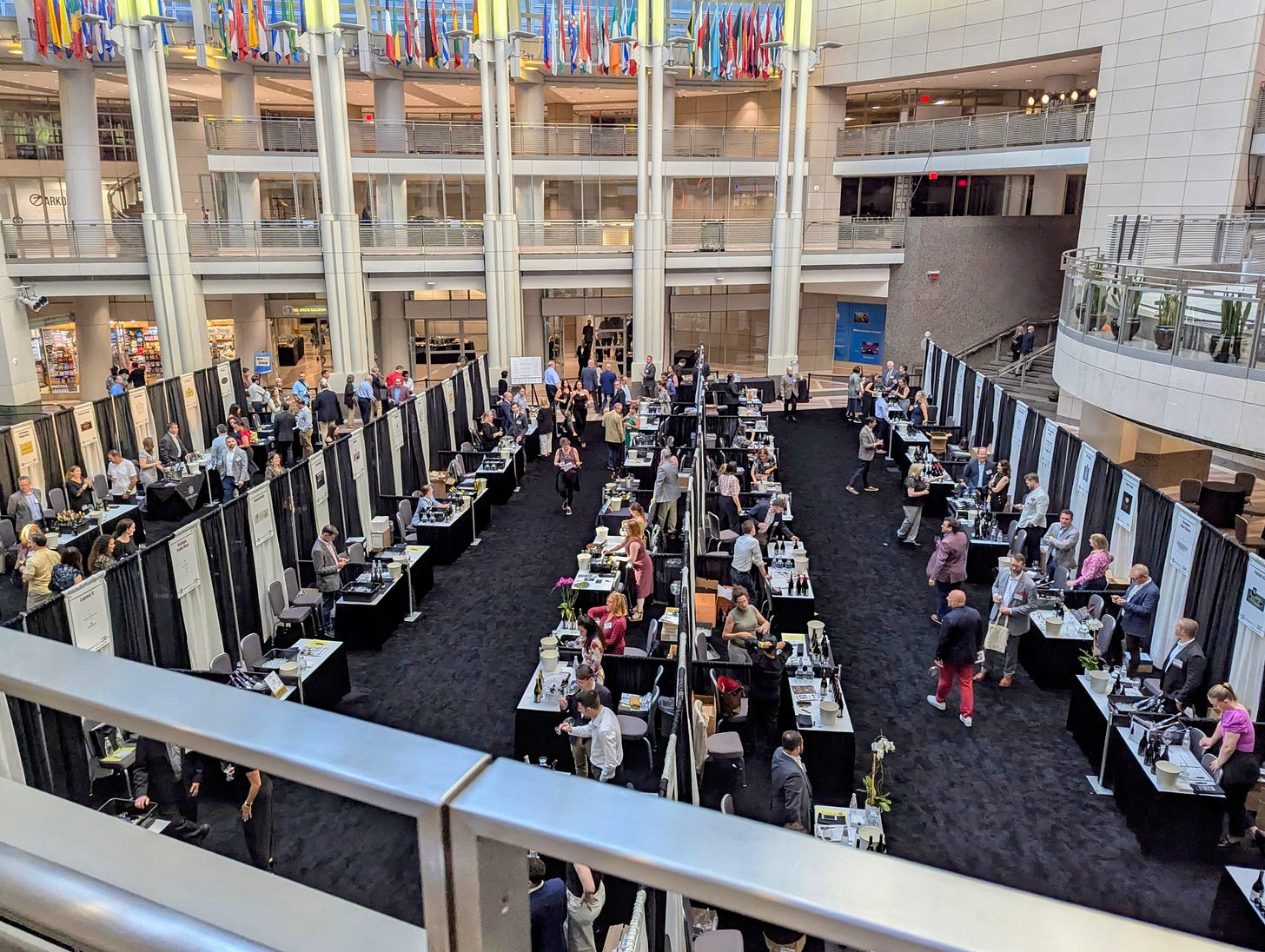
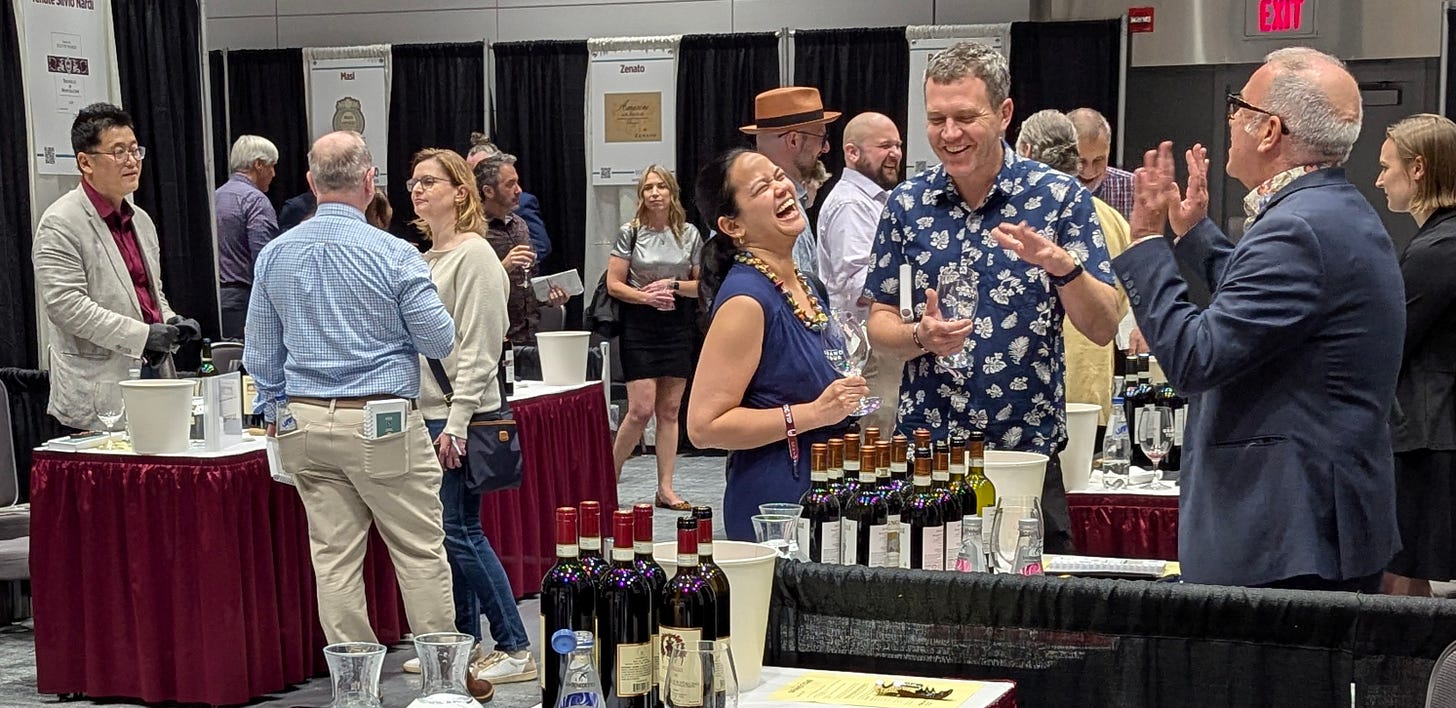
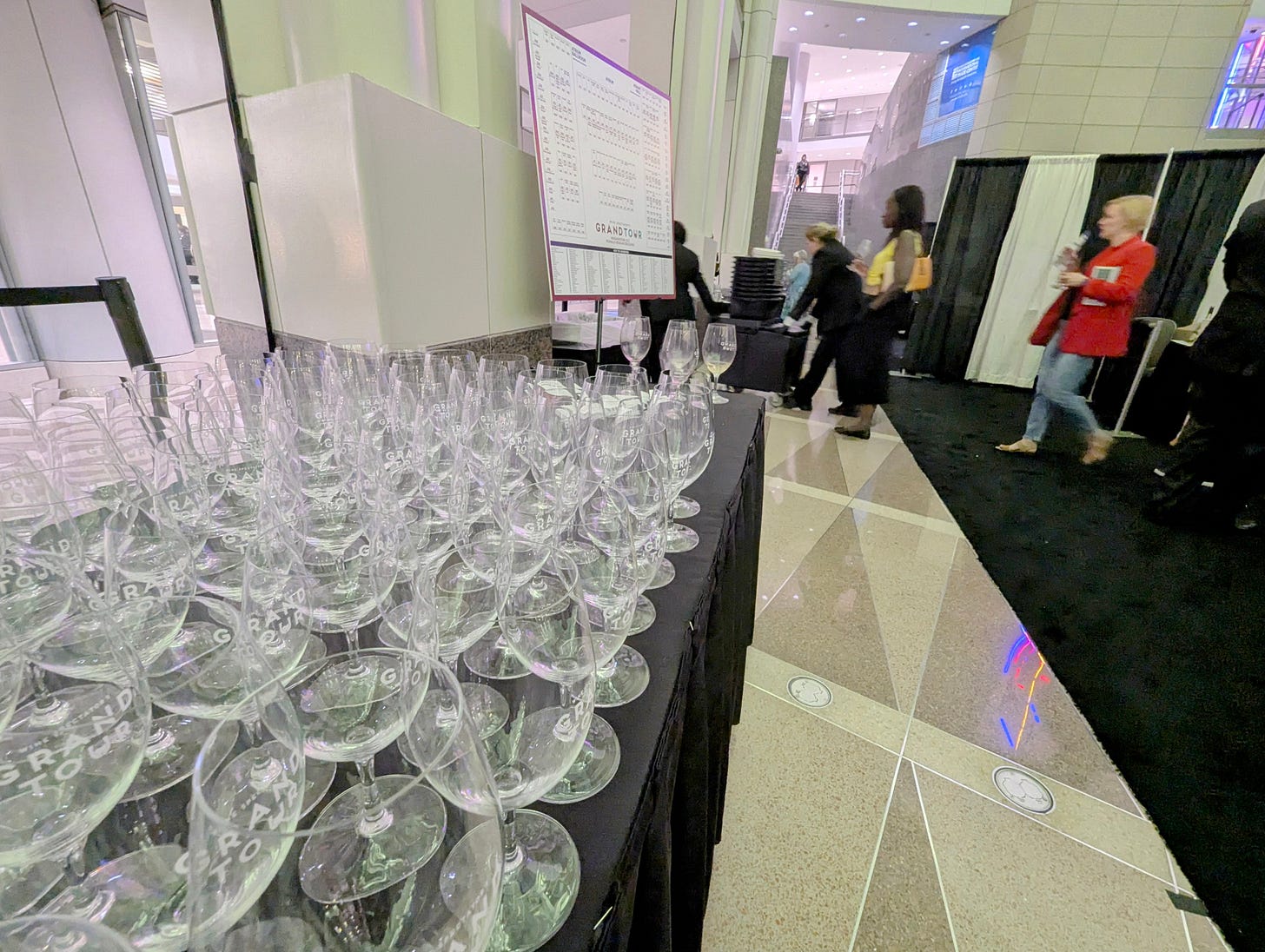
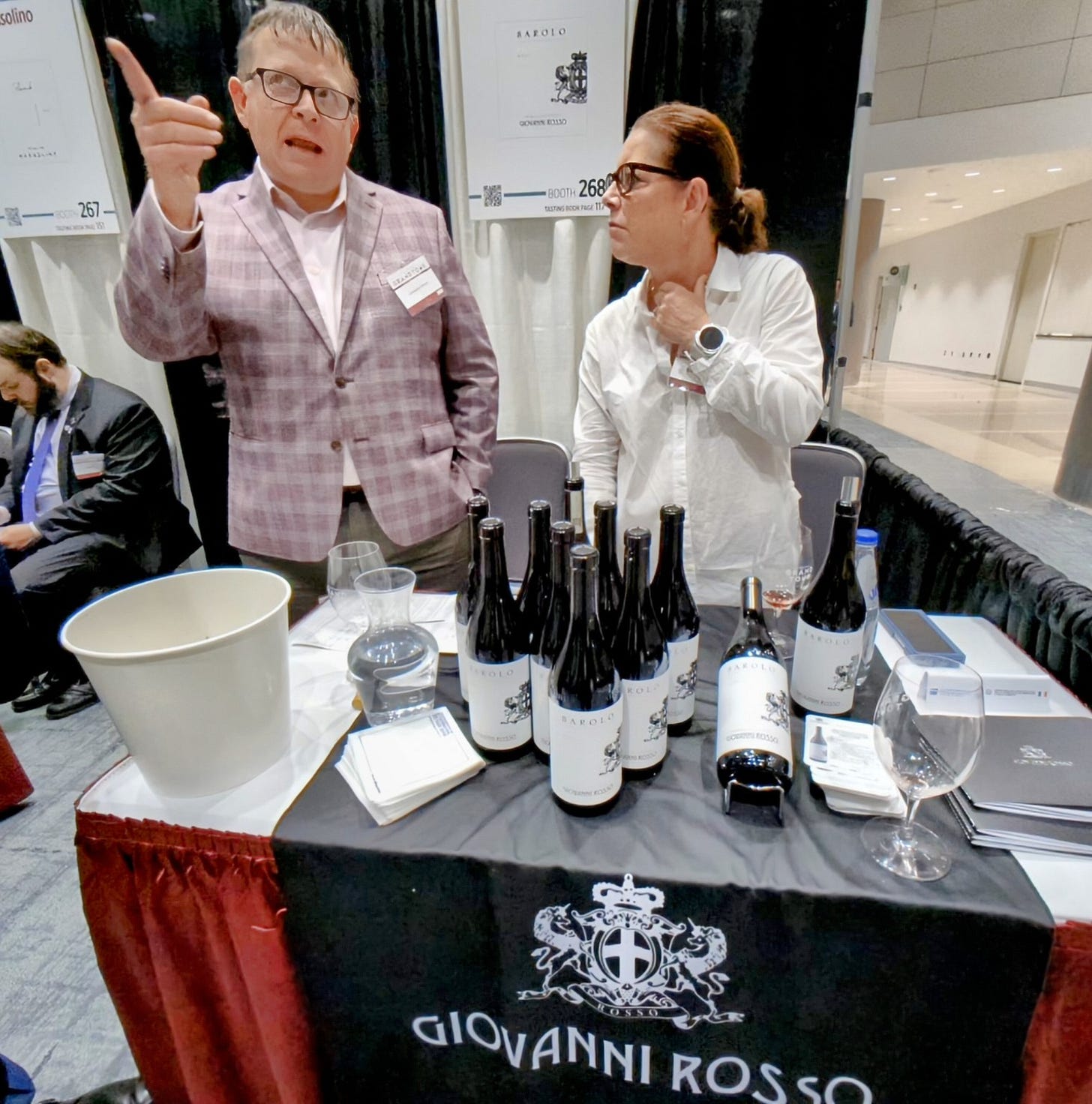
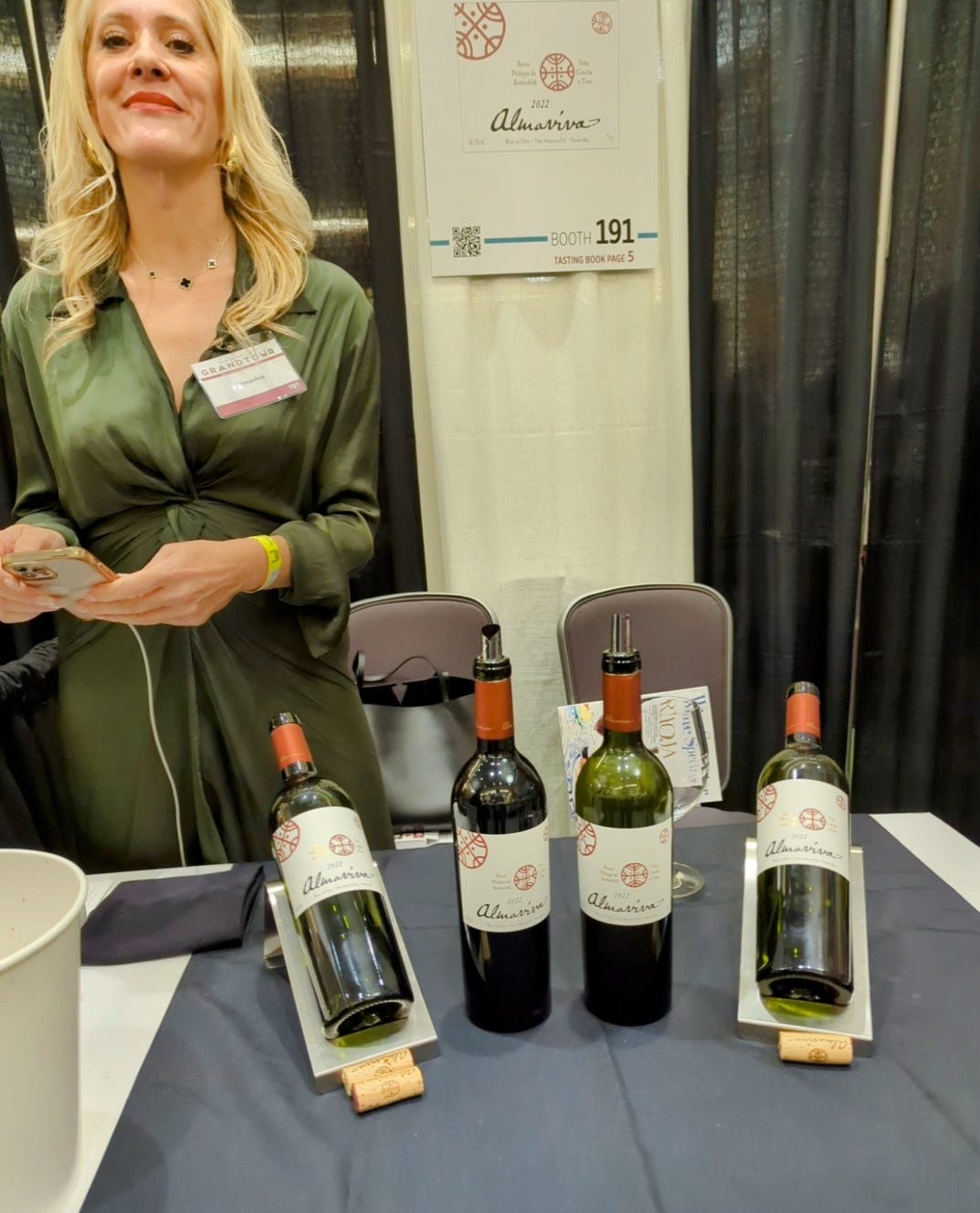
Thanks for the tips Craig. Number four's always a good one!